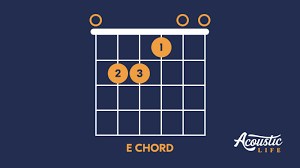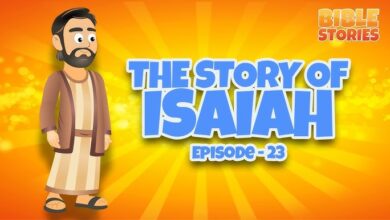E Chord Made Easy: Your Simple Guide to Mastering the E Chord on Guitar

The e chord is one of the first chords many people learn on guitar. It sounds strong, full, and bright. If you’re learning guitar, the e chord is a must-know shape that pops up in many songs. It’s used in rock, pop, blues, country — you name it. Best of all, it’s not too hard to learn. Whether you’re just starting or reviewing the basics, this guide will help you understand how to play the e chord, where to use it, and why it matters. We’ll show you different ways to play it, easy tricks to remember the shape, and fun facts that make it easier to enjoy learning guitar. So, grab your guitar and let’s make the e chord your new best friend.
Many beginners feel stuck when trying to remember guitar chords. The good news is, the e chord is simple and sounds amazing when played right. In this post, we’re not just going to give you the same boring diagram and move on. We’ll break it down in kid-level steps: how your fingers should move, why the sound works, and how to fix it when it doesn’t sound right. We’ll even show you different versions of the e chord you can try as you get better, including mini shapes and cool triads. There’s also some helpful music theory — but don’t worry, we’ll keep it simple and friendly. Our goal is to make sure you don’t just play the e chord, but really know it, inside and out. Once you feel comfortable with it, playing your favorite songs will get way easier.
What Is the E Chord and Why Beginners Love It
The e chord is one of the easiest and most fun chords to play on guitar. It sounds full and strong, and it works in many songs. Lots of beginners love the e chord because it’s simple to learn and makes you feel like a real guitarist right away. You only need three fingers, and you can use all six strings, which gives it a big, bold sound. Many famous songs use the e chord, so when you learn it, you’re already halfway to playing real music. It also helps your fingers get stronger and ready for more chords later. Some chords take a lot of time to learn, but not the e chord — it’s quick to understand. Once you know the shape, you’ll be playing it over and over again. That’s why so many people say it’s their favorite chord when they’re first starting out.
How to Play the E Chord Step-by-Step (Easy for Kids and Grown-Ups)
Playing the e chord is like giving your fingers a small puzzle — but it’s one you can solve! First, place your middle finger (that’s your second finger) on the second fret of the fifth string. Next, your ring finger (third finger) goes on the second fret of the fourth string. Then, your pointer finger (first finger) goes on the first fret of the third string. Now, strum all six strings from top to bottom. You should hear a nice, full sound. If it sounds weird, check if any finger is too flat or touching the wrong string. Keep your fingers curled and press down hard enough to get a clear note. Try slowly at first, and your fingers will remember the shape soon. Practice this a few times every day, and soon your hands will do it without thinking. That’s when the magic starts!
Common E Chord Mistakes and How to Fix Them Fast
It’s normal to make a few mistakes when learning the e chord, but the good news is you can fix them easily! One big mistake is not pressing the strings down hard enough. That can make your chord sound buzzy or quiet. Another mistake is letting your fingers touch the wrong string. That blocks the sound. Make sure each finger is only pressing the string it should. A helpful tip is to curl your fingers like claws and keep your thumb behind the neck. This gives you better control and space. Also, check your strumming — you should hit all six strings for a big sound. If your hand hurts, take a small break and try again. Your fingers will get stronger each time you play. Don’t give up — every guitarist makes these mistakes at first. Keep practicing, and the e chord will sound great soon!
Fun and Easy E Chord Variations You Can Try Today
Once you know the basic e chord, you can try fun new ways to play it! One cool shape is called the easy e — it only uses one finger and sounds good for quick songs. You can also try mini e chords, where you play just three strings. These are great if your hands are small. Another fun one is the barre e chord — it’s harder, but sounds amazing once you get it! You can also play e chord on different parts of the guitar neck. That gives it a fresh sound but still keeps the same chord name. Try changing the rhythm, strumming softly or loudly, or mixing it with other chords like A or B. Playing different versions makes the e chord feel new again. These variations help you get creative and keep guitar fun. Try one or two each day and see what you like best.
Simple E Chord Theory Even Beginners Can Understand
Don’t worry — music theory doesn’t have to be scary! The e chord is made from three notes: E, G sharp, and B. These are part of the E major scale. That’s why it’s called a “major chord.” It sounds happy, strong, and full. Every chord has a root note (E in this case), a third (G#), and a fifth (B). These three notes work together like a team to make that bright sound you hear. When you strum the e chord, you’re really playing all those notes across the strings. Some are repeated, but that’s okay — it makes the sound bigger. Learning this helps you understand other chords too. You don’t need to memorize everything right away, but knowing these small things will help as you grow as a guitarist. It’s like learning the ABCs before writing sentences. Start small, and you’ll be a music pro in time.
Why the E Chord Sounds So Good (And Where to Use It)
The e chord sounds rich and happy because it uses all six strings and has a strong base note. It’s one of the only chords that let you play every string and still sound clean. That’s why it feels so good to play! You can use the e chord in almost every style — rock, blues, country, pop, and even folk music. It goes well with chords like A and B, and you’ll see it in lots of beginner songs. Because of its big sound, it’s often used at the start or end of songs. It feels like a strong musical hug! If you’re writing your own music, the e chord is a great place to start. Whether you strum slow or fast, it always brings energy to your song. It’s one of those chords that sounds good no matter how simple the song is
Conclusion
The e chord is your new best friend on guitar. It’s simple, strong, and fun to play. You can use it in lots of songs, and it helps you grow fast as a player. Once you learn this chord, you’ll feel proud and ready to try even more. It’s a small step that makes a big sound.
Don’t worry if your fingers feel funny at first — that’s normal! Keep trying every day, and the e chord will get easier. Soon you’ll play it with your eyes closed. Keep having fun, and remember: every great guitar player started with one chord, just like this.
FAQs
Q: What is the e chord on guitar?
A: The e chord is a basic guitar chord made of the notes E, G#, and B. It sounds happy and full.
Q: Is the e chord easy to play?
A: Yes! It’s one of the easiest chords to learn and great for beginners.
Q: Can I play songs with just the e chord?
A: Yes, many simple songs use the e chord with just a few others like A or B.
Q: Why does my e chord sound bad?
A: Your fingers might not be pressing hard enough or could be touching the wrong strings. Try adjusting your hand.
Q: Are there different ways to play the e chord?
A: Yes! You can play it open, as a barre chord, or even as a mini version using fewer strings.





